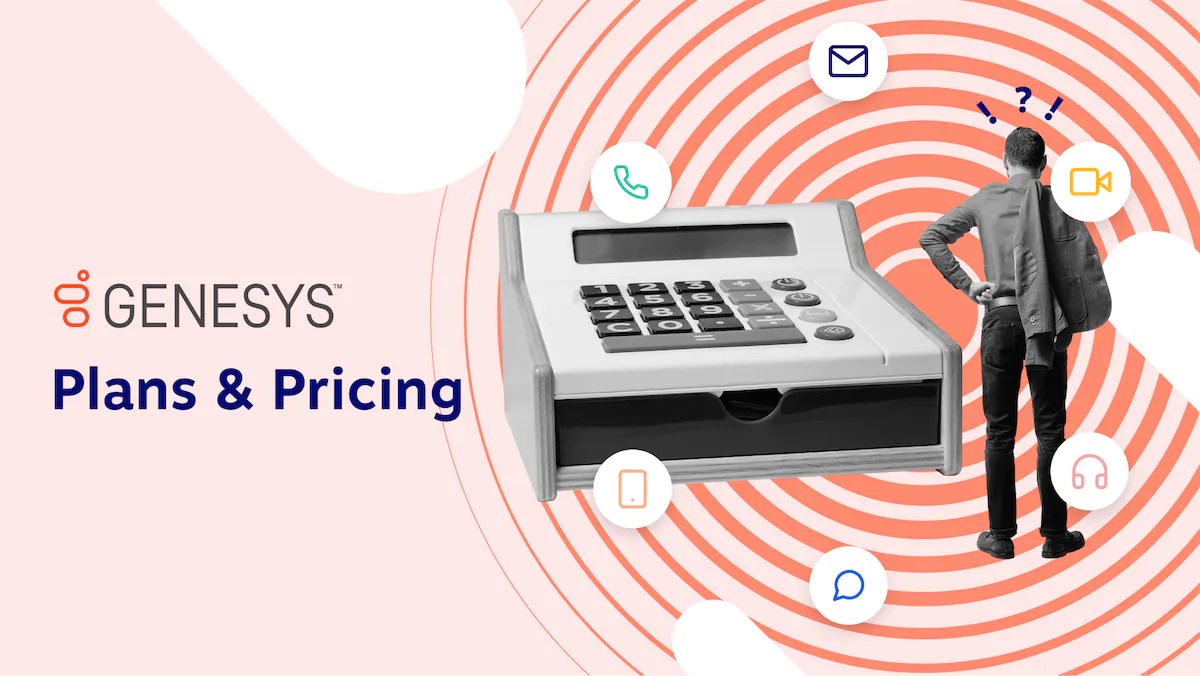When customer interactions happen across multiple channels, it can be hard to unearth the right insights about your products, services, and experiences. With conversation analytics, you can pull these insights quickly and consistently.
Conversation analytics analyzes all interactions occurring via phone, email, live chat, social media, and more to help you understand customer sentiment and learn what they’re saying in real time. With this real-world data, you can improve your brand based on what your customers want, need, and expect.
Our guide explores conversational analytics, how it works, its benefits and challenges, and how you can leverage it to unlock valuable insights and transform your customer experience (CX).
What Are Conversation Analytics?
Conversation analytics is the process of analyzing customer interactions to learn more about their behavior and sentiment. Conversation analytics analyzes interactions across various channels and interfaces, including live chat, voice conversations, customer service chatbots, virtual assistants, other automated platforms, and more.
How Does Conversation Analytics Work?

Conversation analytics is like having a window into your customers’ minds. Whether through direct or implicit feedback, the three-step conversation analytics process allows you to understand the wants, needs, and frustrations of your customers from their interactions.
1. Data collection

The first step of conversation analytics involves gathering conversational data from various touchpoints across the customer journey. This can include:
- Phone calls
- Emails
- Live chat transcripts
- Social media comments, posts, and direct messages
Conversational analytics software also uses Natural Language Processing (NLP) to convert speech into text for spoken conversations. NLP helps the system understand the meaning behind the words, including customer intent and sentiment.
2. Conversation analytics processing
In step two, conversation analytics tools combine with traditional analytics data sources like CRM, call center software, and knowledge bases to gain a comprehensive and holistic view of your customers. By using datasets and algorithms, the software can identify interactions with the same customer across different devices and applications. This processing centralizes data and simplifies further analysis.
3. Analysis and reporting

After collection and processing, conversational analytics uses artificial intelligence (AI) and machine learning (ML) algorithms to analyze the text data. The conversation analytics tool also translates this complex data into clear reports and visualizations so you can see conversational trends and patterns, keywords, and emotions across all your customer interactions.
The system analyzes conversations and customer queries and identifies insights like customer satisfaction scores (CSAT), common or trending issues, and customer behaviors. It also surfaces key call center metrics and KPIs such as first response times and first contact resolution rates.
Common Challenges of Conversational Analytics
Conversation analytics is a beneficial tool for customer interactions, but it’s not without its challenges. Here are some key difficulties you might consider:
- Language interpretation: Human language can be messy and complex. Conversation analytics can struggle with subjectivity, sarcasm, and slang. AI algorithms can misinterpret these nuances, leading to inaccurate insights.
- Multilingual support: For your business to operate globally, customer conversation analytics software and customer service AI must support multiple languages, often requiring significant resources.
- Understanding context: Just like humans, conversational analytics tools can struggle to understand the full context of a conversation. Conversational cues like tone of voice and nonverbal actions are missing from text data, making it hard for AI to understand the true meaning of what they’re saying.
- Data privacy and security: Conversation analytics involves analyzing customer interactions — which can contain sensitive data. Businesses need to prioritize data privacy, security, and compliance by meeting security and privacy regulations and implementing robust security measures to safeguard customer information.
- Conversation analytics software scalability: As the volume of customer conversations increases, systems need to handle the growing data load at the same rate the business grows. Scalability is crucial to ensure that the tool can continue to deliver customer insights efficiently.
- Data bias: NLP models are trained on historical data, which may contain biases from past interactions and can lead to inaccurate, insensitive, and stereotypical responses.
- Continuous learning: Conversational analytics systems must continually train, learn, and grow with new data, which can be cost- and resource-intensive.
Related: How to Use Conversational Analytics Software Effectively

Conversation Analytics Use Cases

Conversation analytics goes beyond simply listening to customer conversations. It empowers you to predict customer needs and deliver proactive service. Here are some use cases of conversation analytics that can help your business.
Anticipate customer behavior
Analyzing past customer interactions and identifying patterns with conversation analytics can help you predict customer behavior. With conversational insights like sentiment analysis, you can reduce customer churn by determining which customers are at risk of leaving and which ones are likely to make a purchase.
Forecasting behavior allows you to take proactive steps to increase retention, such as offering targeted promotions to high-value customers or reaching out to at-risk customers with personalized support before they turn to a competitor.
Identify customer pain points
Customers won’t always communicate their complaints verbally. Speech analytics can identify customer sentiment across channels, even in situations where a customer might be vague about their dissatisfaction.
Gathering and addressing this indirect feedback allows you to identify recurring issues, pain points, and customer service expectations your customers might face or hold. By understanding these pain points, you can prioritize improvements to your products, services, or customer support and address negative experiences before it’s too late.
Optimize the sales funnel
You can use conversation analytics to analyze sales calls and pinpoint where prospects get stuck or hesitant about converting the sale. You can optimize your sales scripts so your sales team can handle issues more effectively, leading to a smoother sales process.
Conversation analytics can also help identify upsell and cross-sell opportunities during sales calls. Your sales team can recommend relevant products or services by analyzing customer buying habits and preferences taken from conversations, increasing their order values.
Improve customer service
With deep insights into customer communication and habit patterns — including preferred conversation channels — businesses can implement powerful customer service strategies that help teams identify and address areas for improvement. NLP in customer service also helps teams to automate FAQ responses, anticipate seasonal or other behavior changes, and more, enabling them to cater their support to their audiences.
Personalize experiences
Conversation analytics collects audience data about preferences, behaviors, and needs. With this information, teams can identify recurring sentiments and themes, allowing them to prioritize customer experience personalization by tailoring responses and anticipating customer concerns. For example, if a customer frequently asks about a specific product feature, future interactions can prioritize relevant updates or solutions while personalizing recommendations and responses based on conversation history.
Benefits of Conversation Analytics

Conversation analytics is advantageous to businesses and customers alike. Companies that adopt conversational analytics typically experience benefits like:
- Increased sales and conversions: With conversation analytics, you can analyze sales calls and identify buying signals and customer objections, helping sales teams improve their ability to close deals. Understanding these roadblocks allows you to optimize your strategies to handle sales objections more effectively and boost conversion rates.
- Improved CX: Conversation analytics isn’t just about listening to your customers; it’s about truly understanding them. By analyzing your customer interactions, you can gain valuable insights and customer feedback that can help you make business decisions to deliver better customer experiences consistently.
- Enhanced agent performance: Using conversation analytics to analyze call recordings and chat transcripts helps you spot areas where agents need improvement, such as handling customer escalations. You can use this data to provide targeted coaching and training for your agents and also measure agent performance metrics.
Related: Customer Experience Analytics: How to Track and Improve CX
How To Implement Conversational Analytics
With conversational analytics, you can improve CX and skyrocket the quality of your service solutions. To implement conversational analytics:
- Set clear objectives. Know what you want to achieve — like tracking and lowering average handle times (AHT), recognizing customer trends, or analyzing agent performance.
- Choose your software and integrate it with your existing tech stack. Make sure your software aligns with your needs and offers features like real-time monitoring and omnichannel support.
- Prepare your data by cleaning and pre-processing it. Use this time to transcribe voice recordings and standardize data formats.
- Follow the conversational analytics process. Repeat multiple times to collect data across various scenarios.
Monitor reports and adjust services. Consistently read and analyze conversational analytics reports, using the findings to improve customer support and business services.
Enhance Customer Conversations with Nextiva
Conversational analytics empowers and enables you to provide exceptional experiences throughout the entire customer journey. With software like Nextiva, you can gain valuable insights from customer interactions, unlock the full potential of your services, and drive your business forward.
Nextiva’s business intelligence analytics product goes beyond simple data collection — it provides real-time insights that can be acted upon immediately. Invest with us today to monitor contact center activity across your organization, identify performance trends, and even gamify performance to boost employee engagement, all within one comprehensive platform.
Business VoIP service done right.
View, compare and act on trends between time periods, employees, locations and even marketing campaigns.
Conversation Analytics FAQs
If you still have questions about conversation analytics, we’ve got you covered. Here are more in-depth answers to some common questions.
Conversation analytics is important because it allows you to gain a deeper understanding of your customers and make better data-driven decisions. By analyzing your customer interactions, you can identify customer needs, pain points, and preferences.
You can use this valuable information to improve your customer support, product development, and business strategy, resulting in better customer relationships and higher CSAT scores.
Data security and compliance are top priorities regarding conversational AI analytics. While conversation analytics tools can’t guarantee complete security, reputable vendors implement robust security measures to safeguard customer data. Choose a conversation analytics solution that complies with relevant data privacy regulations, such as GDPR and CCPA.
Yes, conversation analytics relies on AI, specifically conversational AI, Natural Language Processing, and machine learning. NLP allows computers to understand human language, enabling conversation analytics tools to analyze the meaning and sentiment within customer interactions.
Sentiment analysis focuses on understanding the overall emotional tone of a conversation (positive, negative, or neutral), while conversational analytics goes a step further and analyzes the broad context of a conversation. Conversation analytics analyzes sentiment and extracts key insights like customer pain points and buying signals, making sentiment analysis a component of conversation analytics but not the whole picture.
An example of a conversation analysis could be studying a recorded conversation between a customer service agent and a customer to identify knowledge gaps, technical proficiency, customer sentiment and intent, and more.
The key concepts of conversation analysis include:
🔹 Turn-taking: The process of alternating between speakers in a conversation.
🔹 Adjacency pairs: The conversational pattern where a phrase or question is followed by a response.
🔹 Speech acts: The initial request or expectation of a conversation.
🔹 Nonverbal cues: Body language, gestures, facial expressions, pauses, and other nonverbal acts in a conversation.
🔹 Sequence organization: A conversation’s structure, including greetings, transitions, and closings.
🔹 Repair sequences: How successfully participants identify and fix errors or misunderstandings.

















 Customer Experience
Customer Experience 








